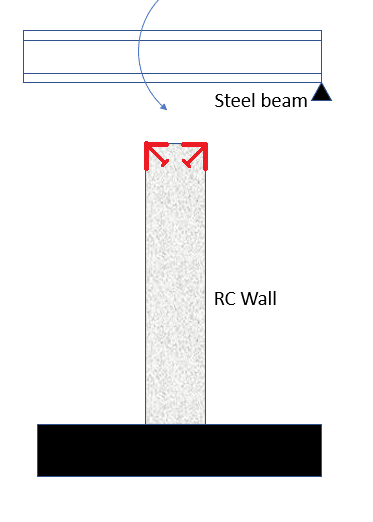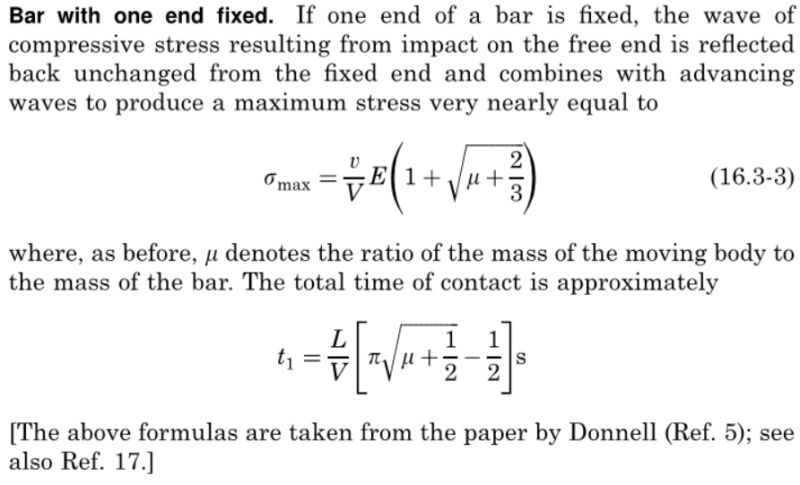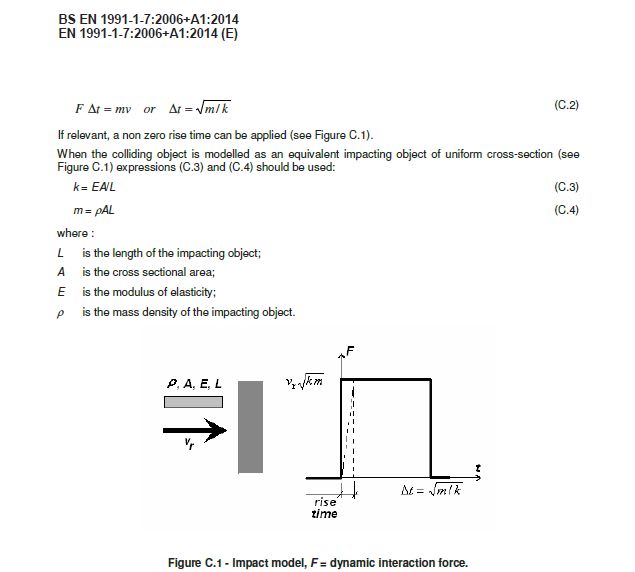bkal
Structural
- Feb 27, 2003
- 272
Hello forum,
I need to look into a case of a steel beam (box cross section) falling on top of a reinforced concrete wall. I am considering two cases: (i) the beam falling freely and (ii) the beam swinging about one of its ends (please see attached for an explanation). The wall in question has return walls away from a potential impact location; it has no slab on top of it.
I am aware of various approaches to assess effects such as penetration, perforation and scabbing of reinforced concrete walls / slabs when impact direction is perpendicular to their plane. However, I am not aware of any work regarding objects impacting on the edge of the concrete element in direction of the plane of the element. Any pointers or ideas on how to approach this would be appreciated.
We are also looking into dismissing this case based on a probability (low) of the beam actually falling.
Thanks in advance.
I need to look into a case of a steel beam (box cross section) falling on top of a reinforced concrete wall. I am considering two cases: (i) the beam falling freely and (ii) the beam swinging about one of its ends (please see attached for an explanation). The wall in question has return walls away from a potential impact location; it has no slab on top of it.
I am aware of various approaches to assess effects such as penetration, perforation and scabbing of reinforced concrete walls / slabs when impact direction is perpendicular to their plane. However, I am not aware of any work regarding objects impacting on the edge of the concrete element in direction of the plane of the element. Any pointers or ideas on how to approach this would be appreciated.
We are also looking into dismissing this case based on a probability (low) of the beam actually falling.
Thanks in advance.



